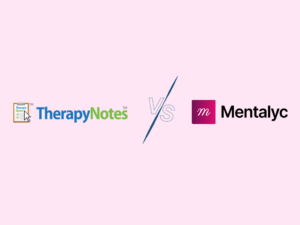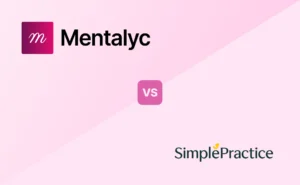Generalized Anxiety Disorder (GAD) is a mental health condition that affects millions of people worldwide. It’s characterized by excessive worry, fear, and anxiety regarding events and activities such as work, health, finances, relationships, and daily responsibilities. Unlike anxiety triggered by stressors or threats, individuals with GAD experience ongoing and uncontrollable worry that goes beyond any specific event or situation. This condition significantly impacts clients’ lives because it leads to distress and impairment in many areas of functioning.
Symptoms
The primary symptom of GAD is worry that’s out of proportion to a threat or situation. People with GAD may constantly anticipate the worst-case scenario when there is no evidence to support their fears. Their worries can encompass a range of issues, making it difficult for them to pinpoint the source of their distress.
Unlike phobias or panic disorders, GAD involves a range of concerns that can make it challenging for individuals to identify what specifically causes their distress. In addition to excessive worry, people with Generalized Anxiety Disorder (GAD) may also experience:
- restlessness, difficulty relaxing, or feeling constantly on edge.
- muscle tension that can result in headaches or body aches.
- fatigue and an overwhelming sense of being drained despite having a full night’s sleep.
- feelings of doom or dread.
- reduced tolerance for frustration or uncertainty.
- trouble falling asleep or staying asleep.
- difficulty concentrating or maintaining focus.
- sweating, trembling, or dizziness.
- shortness of breath or heart palpitations.
- nausea or stomach upset.
GAD can manifest at any age, but it’s typically diagnosed during childhood or adolescence and persists into adulthood. It may develop gradually over time or emerge suddenly. The intensity of symptoms may fluctuate, where some individuals experience periods of calm while others experience chronic and severe symptoms. The constant worry associated with GAD may lead to avoidance of situations. This avoidance often interferes with work responsibilities, academic pursuits, and social engagements. Relationships might suffer as the person’s irritability and preoccupation with worry strains interactions with loved ones.

New! Transfer your notes to EHR with a single click. No more copy-pasting.
GAD often coexists with health conditions like depression, other anxiety disorders, and substance use disorders. These additional conditions can complicate the diagnosis and treatment process due to symptom overlap.
The Diagnostic and Statistical Manual of Mental Disorders 5th Edition, Text Revision (DSM 5 TR) is considered the primary source for defining and diagnosing mental disorders. GAD is categorized under ‘Anxiety Disorders’ in this manual. To receive a diagnosis of GAD, individuals must meet the criteria outlined in the DSM-5-TR. These criteria include the following:
1. Excessive Worry and Anxiety – Individuals experience worry and anxiety about events or activities for most days over a period of at least six months.
2. Difficulty Controlling Worry – Individuals find it challenging to manage or control their worry, leading to feelings of helplessness and distress.
3. Physical Symptoms – People with GAD often experience symptoms like muscle tension, headaches, or an upset stomach. Physical symptoms are closely associated with anxiety. The anxiety or worry is usually accompanied by three out of six specific symptoms (only one item is required for children):
4. Feeling restless or constantly on edge.
5. Easily tired or fatigued.
6. Difficulty focusing or paying attention.
7. Irritability.
8. Muscle tension.
9. Disturbed sleep patterns.
- It’s important to note these symptoms must cause distress and impairment in occupational or other important areas of functioning.
Additionally, it’s essential to rule out causes for the symptoms that may be attributed to drugs or medications, or medical conditions such as hyperthyroidism. Symptoms must not be better explained by mental disorders like panic disorder, social anxiety disorder, separation anxiety disorder, or obsessive-compulsive disorder.
Differential Diagnosis
When diagnosing GAD, mental health professionals must carefully consider conditions that share symptoms to ensure an accurate and comprehensive assessment. The diagnostic process is complicated by disorders that coexist because each has its own unique set of symptoms. Some conditions that have symptoms like GAD include:
Panic Disorder – This disorder is characterized by recurring panic attacks. During these episodes, individuals experience fear and discomfort accompanied by symptoms like heart palpitations, sweating, trembling, fear of dying, and a sense of impending doom.
Social Anxiety Disorder (Social Phobia) – People with social anxiety disorder feel fear and apprehension in social situations. They may worry excessively about being embarrassed, humiliated, or judged by others. Social anxiety is more specific to fears related to social interactions.
Obsessive-Compulsive Disorder (OCD) – OCD involves distressing thoughts (obsessions) and repetitive behaviors (compulsions) aimed at reducing anxiety. Some individuals with OCD may worry about contamination, harm, or symmetry, which may overlap with the worries seen in GAD.
Post Traumatic Stress Disorder (PTSD) – PTSD occurs after being exposed to or experiencing traumatic events and includes symptoms like reliving the event, having nightmares, being constantly on edge, and avoiding certain things or places. These symptoms can sometimes be confused with the worry and physical tension of GAD. However, the triggers and underlying causes for both disorders are quite different.
Depressive Disorders – Depression often coexists with GAD. Symptoms like feeling tired all the time, difficulty focusing, and becoming easily irritable are common in both disorders. However, depression is primarily characterized by feelings of sadness, losing interest in things the person used to enjoy, and experiencing changes in appetite.
Specific Phobias – Specific phobias involve fear of objects or situations (like heights, spiders, or flying). Distinguishing between GAD and specific phobias requires evaluating which fears or worries are more prominent.
Health Anxiety Disorder (Hypochondriasis) – This disorder involves concern about having an illness despite little or no medical evidence supporting it. People with GAD may also have health-related worries, but health anxiety disorder focuses mainly on health concerns and potential medical issues.
Substance Use Disorders – The misuse of substances can lead to symptoms that resemble GAD such as feeling restless, irritable, and tense. Sometimes people turn to substances to cope with GAD.
Diagnosing GAD requires a thorough evaluation that considers the characteristics and underlying causes of disorders with similar symptoms for accurate diagnosis and effective treatment planning.
Prevalence and Risk Factors
GAD can affect people from all walks of life and age groups. According to Harvard Medical School (2017), it’s estimated that around 5.7% of individuals experience GAD at some point in their lives. The condition is commonly observed in women more often than men, and there is an increased risk among people who have a family history of anxiety disorders (Harvard Medical School, 2017). While the exact causes of GAD are not fully understood, researchers have identified factors that contribute to its development:
Stressful Life Events. Challenging or stressful life events can trigger or worsen GAD.
Trauma. Traumatic experiences, whether physical, emotional, or psychological in nature, can deeply affect well-being and contribute to the development of GAD. People who have experienced trauma often find it difficult to manage their anxiety. Constant fear and a heightened state of alertness play a role in the excessive worrying observed in individuals with GAD.
Genetics. There is evidence suggesting that genetics influence the development of GAD (Gottschalk & Domschke, 2017). Individuals who have a family history of anxiety disorders are more susceptible to developing GAD. Genetic factors influence brain chemistry and structure, processing, and response to stress and anxiety. Certain genes that are associated with the regulation of neurotransmitters, such as serotonin and GABA, have been linked to the development of GAD. It’s important to note that while these genes can contribute to GAD, they are not the determining factors.
The development of GAD is believed to be an interplay between predisposition, environmental influences, and psychological factors. It’s also worth mentioning that not everyone who experiences stress, trauma or has a genetic vulnerability will develop GAD. Factors like resilience, coping strategies, and access to support systems also play a role in whether someone develops GAD.
By understanding the complex interplay of all these factors, mental health professionals can customize interventions to support individuals in managing and overcoming the challenges posed by GAD.
Consider Cultural Factors
It’s crucial to recognize that different cultures may have perspectives on mental health conditions such as GAD. In some cultures, expressing emotions or acknowledging anxiety might be viewed as a sign of weakness, leading individuals to internalize their distress. As a result, cultural factors can impact how GAD symptoms are recognized and reported within populations, affecting prevalence rates and treatment-seeking behavior.
Treatment of GAD
When it comes to treating GAD, a combination of approaches is usually recommended. Here are some options:
1. Cognitive Behavioral Therapy (CBT) – A first-line treatment, CBT focuses on identifying and challenging thought patterns while gradually facing worries in a controlled way.
2. Medication – Antidepressants or anxiolytics like serotonin reuptake inhibitors (SSRIs) or serotonin-norepinephrine reuptake inhibitors (SNRIs) can help reduce anxiety symptoms.
3. Relaxation Techniques – Mindful breathing, progressive muscle relaxation, and other mindfulness techniques can be helpful in coping with anxiety.
4. Lifestyle Modifications – Exercising, maintaining a nutritious diet, and getting enough sleep can contribute to overall mental health.
5. Support Groups – Provides individuals with an environment to share their experiences with GAD, gain insights, and receive support.
Effective treatment for GAD often involves a combination of psychotherapy, medication use, and lifestyle adjustments.
Other Helpful Tools
In the digital age, mental health professionals can access and use tools to help them enhance clinical and diagnostic accuracy. Some therapists use tools like Wiley Treatment Planners, which saves practitioners time and provides guidance on choosing the most effective, researched-based treatment options.
Between Sessions Resources offers software and thousands of evidence-based worksheets and assessments that can assist professionals with clinical assessment, accurate diagnosis, and client feedback.
You can also use generative AI tools such as Mentalyc, which can save you a great deal of time with the documentation process. Mentalyc allows you to record sessions and transcribe the progress notes in less than two minutes – increasing accuracy and efficiency and providing details clinicians might otherwise miss. Therapists may try this tool by signing up for Mentalyc.
Conclusion
The DSM-5-TR criteria serve as a helpful framework for understanding and diagnosing Generalized Anxiety Disorder (GAD)—a common mental health condition characterized by excessive and uncontrollable worry that negatively impacts various aspects of an individual’s life.
It’s essential to acknowledge and distinguish Generalized Anxiety Disorder (GAD) from other anxiety disorders to offer treatment and support for clients who suffer from GAD. By increasing awareness and understanding of the criteria outlined in the DSM-5-TR, mental health professionals can identify and appropriately intervene, promoting better outcomes for individuals with GAD. Through diagnosis and appropriate treatment, clients with GAD can acquire skills to effectively cope with their anxiety and enhance their well-being.
References:
- Harvard Medical School. National Comorbidity Survey (NCS). (2017). Retrieved from https://www.hcp.med.harvard.edu/ncs/index.php.
- American Psychiatric Association. (2022). Generalized anxiety disorder. In Diagnostic and Statistical Manual of Mental Disorders (5th ed., text rev.).
- Gottschalk MG & Domschke K. (2017). Genetics of generalized anxiety disorder and related traits. Dialogues in Clinical Neuroscience, 19(2):159-168.
Why other mental health professionals love Mentalyc

“It takes me less than 5 minutes to complete notes … it’s a huge time saver, a huge stress reliever.”
Licensed Marriage and Family Therapist

“It’s so quick and easy to do notes now … I used to stay late two hours to finish my notes. Now it’s a breeze.”
Licensed Professional Counselor

“A lot of my clients love the functionality where I can send them a summary of what we addressed during the session, and they find it very helpful and enlightening.”
Therapist

“Having Mentalyc take away some of the work from me has allowed me to be more present when I’m in session with clients … it took a lot of pressure off.”
LPC






